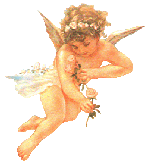|
||||||
Art Patronage in the Italian Renaissance
Art patronage in the Italian Renaissance came from different sources, both public and private, religious and secular, much as it does today. It was not always so. Times were hard for rich and poor alike during the Middle Ages. Europe saw the collapse of the feudal system. Following this, peasants who had previously worked the fields under the protection of their feudal lords left the countryside, migrating to the towns and city centers in pursuit of more lucrative means of support. As population centers became crowded, unfortunately, so followed the Black Death, wiping out a large percentage of the inhabitants. Patronage of the arts was given little thought during this time as people were struggling merely to survive. When the plague finally subsided, however, there emerged a new thriving middle class of merchants and businessmen, men who had wealth and leisure time. Some of this wealth was channeled into the arts during the Early Renaissance. Among this merchant class, a new interest in education developed, specifically reading and mathematics, the language of contracts. There also developed an interest in the pursuit of pleasure like music, literature, and fine art. There still remained some aristocratic, noble families such as those in Ferrara and Mantua who maintained great courts. There arose from the middle class a new nobility, competing with the nobility to patronize the arts, particularly in Florence. Most prominent in Florence among the new nobility were the Medici, who earned their fortunes in the banking industry. The Medici and other Florentine families of note used their enormous wealth to maintain lavish lifestyles, create beauty, both public and private, and to provide extravagant entertainments for the masses. In Venice art patronage was largely controlled by the scuolas, or confraternities, great religious and social organizations. The church was also an important patron of the arts. Creative individuals like artists, architects, musicians, and writers benefited substantially from art patronage during the Italian Renaissance. Brenda Harness, Art Historian
| ||||||
|
|
Welcome ! |
|
We respect your privacy and will never sell your personal information. |
| Click here to sign up for our newsletter. |
Buy great
art books
at Amazon!
Home Glossary of Terms Contact Us About Us Newsletter Subscription
